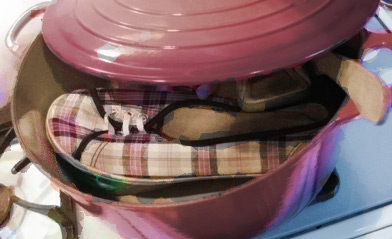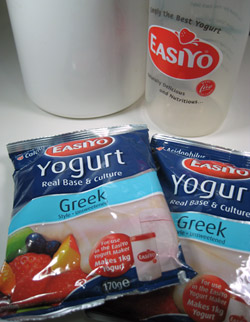
Ideas in Food lived up to their name recently with the thought-provoking post “Are you a shoemaker?” Aki and Alex relay an anecdote from another chef as follows:
“Jacques Torres would often refer to the savory cooks as shoemakers because they were always fixing dishes at the end of the preparation process, adjusting the seasoning and compensating for any mistakes. On the other hand pastry chefs weighed and measured all of their ingredients each time they made a recipe and so the dishes were prepared properly from start to finish.”
As they note the increasing use of precision, planning, and scales on the savory side of the business, they then relay a comment from Wylie Dufresne who said, “”How can you reproduce a dish if you don’t know what went into it?”
It made me ask myself, do I even want to be able to exactly duplicate my dishes.
I understand why a restaurant chef would need to, but that is a world away from the home cook in love with the process of creating and sharing great food. I also see it as a world away from food as art form, and I believe that the cooking process can be as much about art as it is about craft.
However, I understand where Dufresne is coming from (or at least, where it sounds like he is coming from), because making art, and making a living from art, are two very different things. With the latter, the business brain often has to rise up and focus on what is popular and predictable rather than what is inspired. Inspiration means risk, risk means possible failure, and failure in the restaurant business can be deadly. So if most professional chefs save shoemaking for personal time, that would not surprise me.
Of course, “art” is also a loaded term, partially because the 20th century art market worshipped innovation at the expense of craft and technique. The word applied to food makes many think of haute cuisine and culinary stunts. But the word also represents the organic, the spontaneous, and the independent spirit, rather than the rote task of following directions.
If I actually thought that shoemaking was an accurate analogy, I would say that I love being a shoemaker. I never expect people to follow my recipes exactly, any more than I exactly follow my own. It begs the question why I blog recipes at all. Like many, I blog to push myself, to share, hopefully to inspire, and to engage in the invaluable process of trying to learn and teach at the same time.
There are also degrees. To Wylie’s point, I generally know exactly what goes into my dishes, just not down to the milligram. I taste for salt, rather than measure it. I do adjust and compensate, not just at the end but during the process. It’s part of the fun.
Answering my own question, do I want to be able to exactly duplicate my dishes, the answer is both yes and no. I am happy with “close enough”, and the freedom to veer off into uncharted territory. I hope you pardon this intellectual navel gazing, but I’m happy that Aki and Alex made me stop for a second and think through the how and the what and the why.


